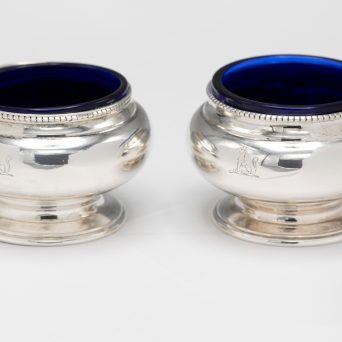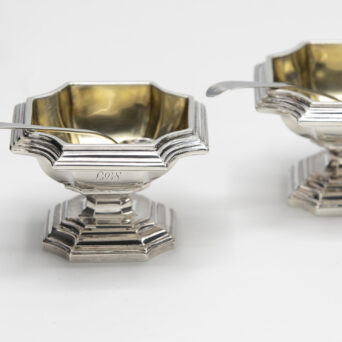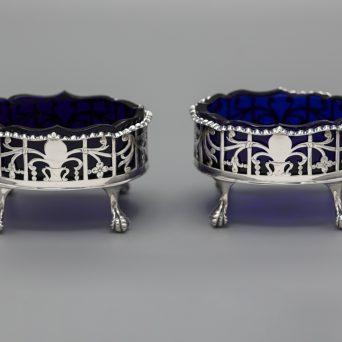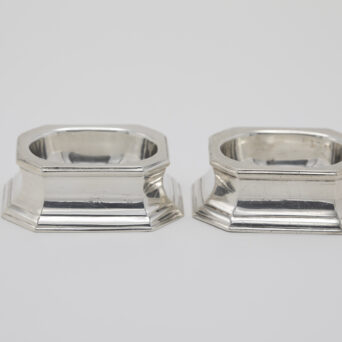Salt cellars were first documented in Ancient Rome, and in the Middle Ages, a large silver dish of salt was considered a status symbol. At the time of its use, it was a symbol of social distinction because only a family of great wealth could afford it. Eventually, smaller sized salt cellars were created for dinner guests to share. In the Victorian era, an individual salt cellar was displayed for every guest to have at the table.
Generally, most salt cellars were made with either gold – gilt interiors or glass liners, as salt is one of the few substances that can corrode silver. If your salts do not either have a gold – gilt interior or a glass liner, remove the salt after each use and wash it to remove any salt residue.




